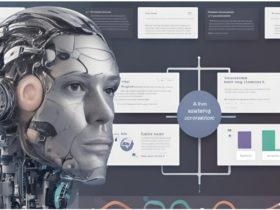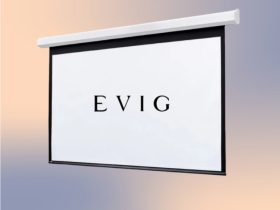In the past decade, artificial intelligence has permeated nearly every facet of human life, from healthcare to transportation, education to entertainment. Among its most fascinating applications is the emergence of AI music generators—tools that leverage machine learning and vast datasets to compose, produce, and refine music with minimal human intervention. These systems are not only reshaping how music is created but also challenging traditional notions of artistry, creativity, and intellectual property. This article explores the mechanics, impact, and future potential of AI music generators, delving into their benefits, limitations, and the ethical questions they raise.
What Are AI Music Generators?
AI music generators are software systems powered by artificial intelligence algorithms, typically trained on extensive libraries of musical compositions, genres, and audio samples. Using techniques like deep learning, neural networks, and natural language processing (for lyrical content), these tools analyze patterns in rhythm, melody, harmony, and structure to generate original music or assist human composers. Popular examples include OpenAI’s MuseNet and Jukebox, Google’s Magenta, Suno AI, and AIVA (Artificial Intelligence Virtual Artist), each offering unique approaches to music creation.
At their core, AI music generator function by recognizing and replicating patterns. For instance, a model trained on classical music might produce a piece reminiscent of Mozart or Beethoven, while one fed hip-hop tracks could generate beats akin to Kanye West or Drake. Some systems allow users to input parameters—like genre, mood, or tempo—to tailor the output, while others operate autonomously, producing entirely novel compositions. Advanced generators can even mimic specific instruments, vocal styles, or production techniques, blurring the line between human and machine-made music.
The Technology Behind AI Music Generation
The backbone of AI music generators lies in sophisticated machine learning models, particularly generative adversarial networks (GANs) and transformer architectures. GANs consist of two components: a generator that creates music and a discriminator that evaluates its quality, refining the output through iterative feedback. Transformers, widely used in language models like GPT, excel at understanding sequential data, making them ideal for composing melodies and harmonies that evolve coherently over time.
Training these models requires massive datasets, often comprising millions of songs across genres, eras, and cultures. Platforms like Spotify, YouTube, or public domain archives provide rich sources of audio data, while MIDI files—digital representations of musical notes—are used to teach AI about composition. Some generators also incorporate real-time feedback from users, allowing them to adapt and improve continuously.
Beyond composition, AI music generators often integrate audio synthesis tools to produce high-quality sound. For example, Jukebox by OpenAI can generate raw audio waveforms, creating realistic vocal tracks complete with lyrics. Similarly, tools like Amper Music or Soundraw enable users to customize tracks for specific purposes, such as background scores for videos or podcasts, with professional-grade production values.
Applications and Benefits
AI music generators have democratized music creation, enabling individuals with little to no musical training to produce professional-sounding tracks. This accessibility has profound implications across industries:
- Content Creation: YouTubers, podcasters, and filmmakers can generate royalty-free music tailored to their projects, bypassing expensive licensing fees or the need to hire composers. Platforms like Soundful and Mubert specialize in creating background tracks for media, offering customizable options to suit any mood or theme.
- Music Production: Professional musicians use AI tools to overcome creative blocks, generate ideas, or experiment with new styles. For instance, artists like Taryn Southern and Holly Herndon have collaborated with AI to co-create albums, blending human emotion with machine precision.
- Gaming and Virtual Reality: AI-generated music enhances immersive experiences in video games and VR environments, dynamically adapting to player actions. Companies like Ubisoft have explored AI for procedural audio, ensuring seamless integration with gameplay.
- Education and Therapy: AI music tools are used in educational settings to teach composition and in therapeutic contexts to create calming or emotionally resonant tracks for mental health support.
The speed and scalability of AI music generators are unmatched. A human composer might take days to craft a single track, while AI can produce dozens in minutes, offering endless variations. This efficiency is particularly valuable in fast-paced industries like advertising, where bespoke jingles are needed on tight deadlines.
Challenges and Limitations
Despite their promise, AI music generators face significant hurdles. One major criticism is their reliance on existing data, which can lead to derivative or formulaic outputs. While AI can mimic styles with uncanny accuracy, it often struggles to produce truly groundbreaking or emotionally profound work, as it lacks the lived experience and intent of a human artist. Critics argue that AI-generated music, while technically impressive, can feel soulless or repetitive, especially when overused.
Technical limitations also persist. Generating high-fidelity audio requires immense computational power, and even top-tier models can produce artifacts—glitches or unnatural sounds—that betray their artificial origin. Vocal synthesis, while improving, often falls short of human nuance, with lyrics sometimes sounding incoherent or generic.
Moreover, AI music generators raise thorny ethical and legal questions. Since models are trained on existing music, they can inadvertently replicate copyrighted material, sparking debates over ownership and royalties. In 2023, the music industry saw lawsuits against AI companies, with artists and labels arguing that training datasets unfairly exploit their work. Additionally, the rise of AI music threatens traditional musicians’ livelihoods, particularly those in niche or freelance roles, as businesses increasingly opt for cheaper, machine-generated alternatives.
The Future of AI Music Generators
Looking ahead, AI music generators are poised to become even more sophisticated. Advances in multimodal AI—combining text, audio, and visuals—could enable tools that create entire multimedia experiences, like music videos synchronized with AI-composed soundtracks. Integration with real-time performance systems might allow AI to improvise alongside human musicians during live concerts, as seen in experimental projects like Google’s Magenta Studio.
Personalization is another frontier. Imagine an AI that learns your musical tastes, mood swings, or even biometric data to craft bespoke playlists or therapeutic soundscapes in real time. Such applications could revolutionize music streaming, mental health care, and fitness industries, where tailored audio enhances user experiences.
However, the future also hinges on resolving ethical dilemmas. Industry stakeholders—AI developers, musicians, and policymakers—must collaborate to establish fair compensation models, transparent data usage, and guidelines for AI’s role in creative arts. Initiatives like the Music AI Ethics Charter, proposed by advocacy groups, aim to balance innovation with artists’ rights, ensuring AI serves as a tool for empowerment rather than exploitation.
A Harmonious Partnership
AI music generators are neither a replacement for human creativity nor a mere novelty—they represent a new paradigm in artistic collaboration. By augmenting human ingenuity with machine efficiency, these tools expand the boundaries of what’s possible in music. Aspiring creators gain access to professional-grade production, established artists find fresh inspiration, and listeners enjoy an ever-growing diversity of sounds.
Yet, the technology’s success depends on how we navigate its challenges. By addressing issues of originality, ethics, and equity, we can harness AI music generators to enrich, rather than diminish, the human experience. As we stand at the cusp of this sonic revolution, one thing is clear: the future of music is not about choosing between man and machine but about composing a symphony where both play in harmony.





Leave a Reply